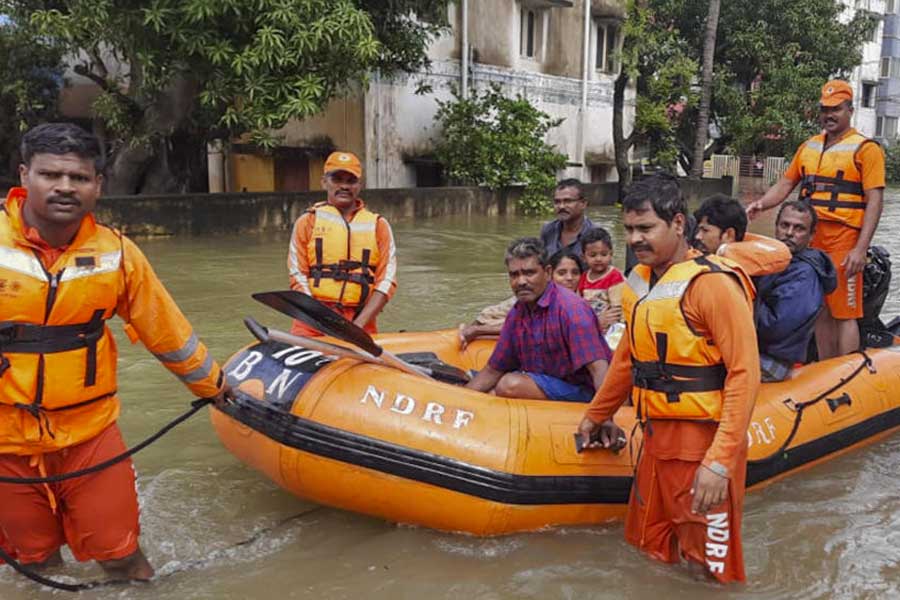The official toll of deaths due to rains rose to seven, as fishing boats and farm tractors were used to rescue people stranded in waterlogged areas in and around the city on Tuesday. The city and adjoining districts were battered by incessant rains on Monday as severe cyclonic storm Michaung loomed over the north coastal areas of Tamil Nadu.
There was respite from rains in most parts of Chennai since Tuesday morning giving time to officials to focus on rescue and relief efforts in rain affected areas.
Addressing a press conference at the Chennai Corporation headquarters on Tuesday morning, Tamil Nadu Chief Minister MK Stalin said relief measures are taking place on a war footing.
Stalin said in the nine districts including Chennai that were hit by torrential rains, a total of 61,666 relief camps were set up with about 11 lakh food packets and one lakh milk packets distributed so far.
Updating on the lives lost due to rain-related incidents, Stalin said that so far seven lives were lost which included deaths due to a wall collapse in neighbouring Chengalpattu district.
The Chennai corporation has brought in 5000 workers from other districts to the city for the flood mitigation works. These workers used farm tractors and fishing boats in flooded areas including Periamet and some other north Chennai areas to rescue people and to distribute relief materials.
While power supply was being restored in phases within Chennai, residents in areas including parts of suburban Tambaram, Ashok Nagar, Kattupakkam and Perungudi complained that there was no sign of power restoration despite rains having stopped for several hours.
Mukesh Chordia, a resident of Ashok Nagar said that water had receded from the arterial roads in the area but power supply was yet to be restored.
Chief Minister M K Stalin told reporters that the power situation was being restored in a phased manner. He said that the handling of the situation was way better when compared to 2015 floods (When AIADMK was in power).
He said in 2015 floods there was an unplanned release of one lakh cusecs from the Chembarambakkam reservoir into Adyar river which led to man-made floods. What the city witnessed now was natural floods that were handled efficiently by the state, Stalin said.
He said that only a maximum of 8000 cusecs of water was released in a planned manner into Adyar and Cooum rivers from Chembarambakkam reservoir in the city's outskirts during the rains this time.
Except for the headline, this story has not been edited by The Telegraph Online staff and has been published from a syndicated feed.











